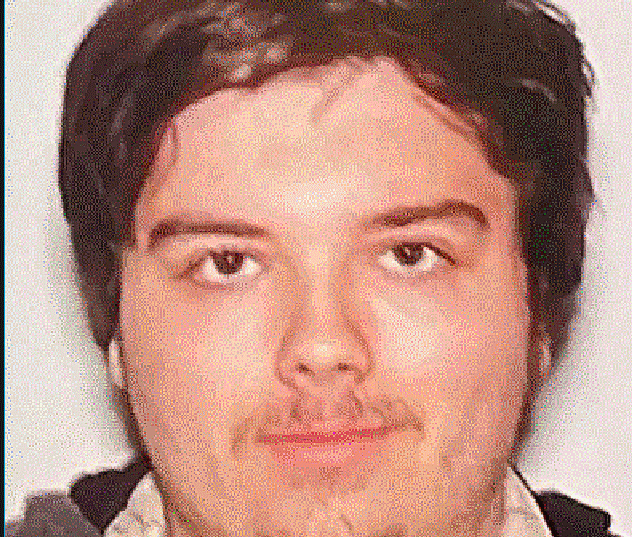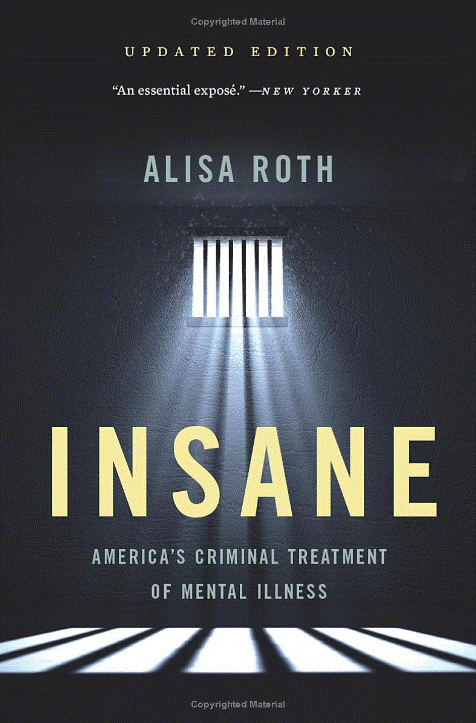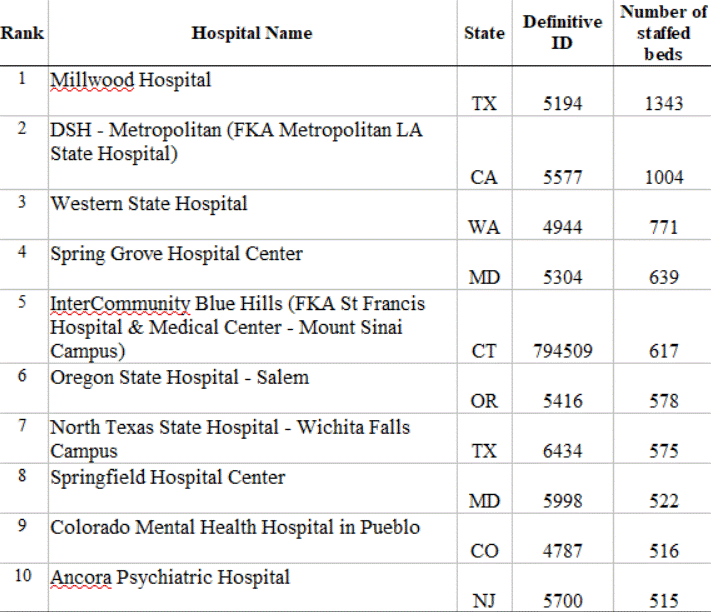RYAN CHRISTOPHER PALMETER HATE CRIME, JACKSONVILLE, FL

Image Source: Jacksonville, Florida Sheriff's Department
By Ruthie DiTucci
This case is legally categorized as a “Hate Crime”. However, it is actually a case about the ambivalence society has for those suffering from mental illness whom are also extremely violent.
Mass shooters always have relatives, friends and neighbors that come forward “after the fact” to say they knew something was very wrong with the shooter.
Ryan Christopher Palmeter did not just snap today. He has been unraveling for quite some time.
Every single weapon he used to shoot and kill three people at the Dollar Store in Jacksonville, Florida was obtained legally.
In guarding U.S. Citizens right to bear arms, society also protects the rights of mentally ill individuals to carry weapons as well. How is it that in 2023, a mentally ill person can still legally obtain a weapon?
In the past, there were hospitals to treat the criminally insane. But within the last few decades, society began closing down hospitals for the criminally insane and began merging people suffering from mental illness with criminals.
Mass shooters routinely have had complaints filed against them by multiple neighbors before they commit their final acts. They don’t just wake up one morning and decide to engage in the heinous act of mass shooting.
Many who often display mental illness symptoms for years to their relatives, teachers, schoolmates, co-workers and neighbors do so long before they snap.
Here is a list of just a few who were all mentally ill and their symptoms were ignored and their rights to privacy were protected by HIPPA laws:
- Patrick Crusius, who killed 22 people at a Walmart in El Paso, Texas in 2019, was diagnosed with schizophrenia.
- Nikolas Cruz, who killed 17 people at Marjory Stoneman Douglas High School in Parkland, Florida in 2018, was diagnosed with autism spectrum disorder and attention deficit hyperactivity disorder.
- Stephen Paddock, who killed 58 people and injured 422 others at a country music festival in Las Vegas, Nevada in 2017, was diagnosed with depression and anxiety.
- Elliot Rodger, who killed six people and injured 14 others at the University of California, Santa Barbara in 2014, was diagnosed with Asperger’s syndrome and narcissistic personality disorder.
- Jared Lee Loughner, who killed six people and injured 13 others at a supermarket in Tucson, Arizona in 2011, was diagnosed with paranoid schizophrenia.
- Seung-Hui Cho, who killed 32 people and injured 17 others at Virginia Tech in 2007, was diagnosed with major depressive disorder and social anxiety disorder.
- Eric Harris and Dylan Klebold, who killed 13 people and injured 24 others at Columbine High School in 1999, were both diagnosed with depression and anger management issues.
Keep in mind that not all mentally ill people become mass shooters but 9 out of 10 of mass shooters do suffer from mental illness.
And now Ryan Christopher Palmeter, previously just a mentally ill individual has become a mass shooter after having killed three people at the Dollar General store in Jacksonville, Florida. He left a Last Will and Testament and a racist manifesto – after the shooting, he took his own life.
THIS IS A DEVELOPING STORY…
UPDATE VIDEO from the Jacksonville, Florida Sheriff’s Office. It is an age restricted video so you must sign in to YouTube.
Los Angeles, Chicago and New York City jails are now the largest providers of mental health care in the entire United States. The mentally ill whom belong in hospitals are thrown in with criminals. By the time a person suffering from mental illness goes through several incarcerations, they become devious criminals because imprisonment is the finishing school of crime. And do not ignore that the number one method of death or injury in jail – is suicide.
The United States Health and Incarceration Industries must consider placing the mentally ill in hospitals for the criminally insane so that their illnesses may be treated. Throwing the mentall ill into prisons has never worked – yet the United States keeps repeating this failed method.

The three largest psychiatric facilities in the United States are actually prisons – not hospitals.
The phasing out of hospitals for the criminally insane in the United States began in the 1950s and 1960s, with the introduction of new psychotropic medications and the development of community-based mental health services. This process accelerated in the 1980s, during the Reagan administration, which implemented policies that resulted in the closure of many state mental hospitals.
In 1955, the introduction of chlorpromazine, the first effective antipsychotic medication, revolutionized the treatment of mental illness. This made it possible to treat people with schizophrenia and other serious mental disorders in outpatient settings, rather than in large, isolated institutions.
In the 1960s, there was also a growing movement to deinstitutionalize mental health care. This movement was motivated by concerns about the poor quality of care in state mental hospitals, as well as the belief that people with mental illness could be better served in community-based settings.
The Reagan administration’s policies further accelerated the deinstitutionalization of mental health care. In 1981, President Reagan signed the Omnibus Budget Reconciliation Act, which included provisions that cut funding for state mental hospitals. This led to the closure of many state mental hospitals and the release of thousands of people with mental illness into the community.
The deinstitutionalization of mental health care has had both positive and negative consequences. On the one hand, it has allowed many people with mental illness to live in the community and receive treatment in less restrictive settings. On the other hand, it has also led to an increase in homelessness and incarceration among people with mental illness.
The phasing out of hospitals for the criminally insane is a complex issue with no easy answers. It is important to weigh the potential benefits and risks of deinstitutionalization carefully in order to develop policies that will best serve the needs of people with mental illness.
The chart below features the top 10 Psychiatric Facilities in the United States.








 Afrikaans
Afrikaans Albanian
Albanian Amharic
Amharic Arabic
Arabic Armenian
Armenian Azerbaijani
Azerbaijani Basque
Basque Belarusian
Belarusian Bengali
Bengali Bosnian
Bosnian Bulgarian
Bulgarian Catalan
Catalan Cebuano
Cebuano Chinese (Simplified)
Chinese (Simplified) Chinese (Traditional)
Chinese (Traditional) Corsican
Corsican Croatian
Croatian Czech
Czech Danish
Danish Dutch
Dutch Esperanto
Esperanto Estonian
Estonian Filipino
Filipino Finnish
Finnish French
French Frisian
Frisian Galician
Galician Georgian
Georgian German
German Greek
Greek Gujarati
Gujarati Haitian Creole
Haitian Creole Hausa
Hausa Hawaiian
Hawaiian Hebrew
Hebrew Hindi
Hindi Hmong
Hmong Hungarian
Hungarian Icelandic
Icelandic Indonesian
Indonesian Irish
Irish Italian
Italian Japanese
Japanese Javanese
Javanese Kannada
Kannada Kazakh
Kazakh Khmer
Khmer Korean
Korean Kyrgyz
Kyrgyz Lao
Lao Latin
Latin Latvian
Latvian Lithuanian
Lithuanian Luxembourgish
Luxembourgish Macedonian
Macedonian Malagasy
Malagasy Malay
Malay Malayalam
Malayalam Maltese
Maltese Maori
Maori Marathi
Marathi Mongolian
Mongolian Myanmar (Burmese)
Myanmar (Burmese) Nepali
Nepali Norwegian
Norwegian Pashto
Pashto Persian
Persian Polish
Polish Portuguese
Portuguese Punjabi
Punjabi Romanian
Romanian Russian
Russian Samoan
Samoan Scottish Gaelic
Scottish Gaelic Serbian
Serbian Sesotho
Sesotho Shona
Shona Sindhi
Sindhi Sinhala
Sinhala Slovak
Slovak Slovenian
Slovenian Somali
Somali Spanish
Spanish Sundanese
Sundanese Swahili
Swahili Swedish
Swedish Tajik
Tajik Tamil
Tamil Telugu
Telugu Thai
Thai Turkish
Turkish Ukrainian
Ukrainian Urdu
Urdu Uzbek
Uzbek Vietnamese
Vietnamese Welsh
Welsh Yiddish
Yiddish Yoruba
Yoruba Zulu
Zulu